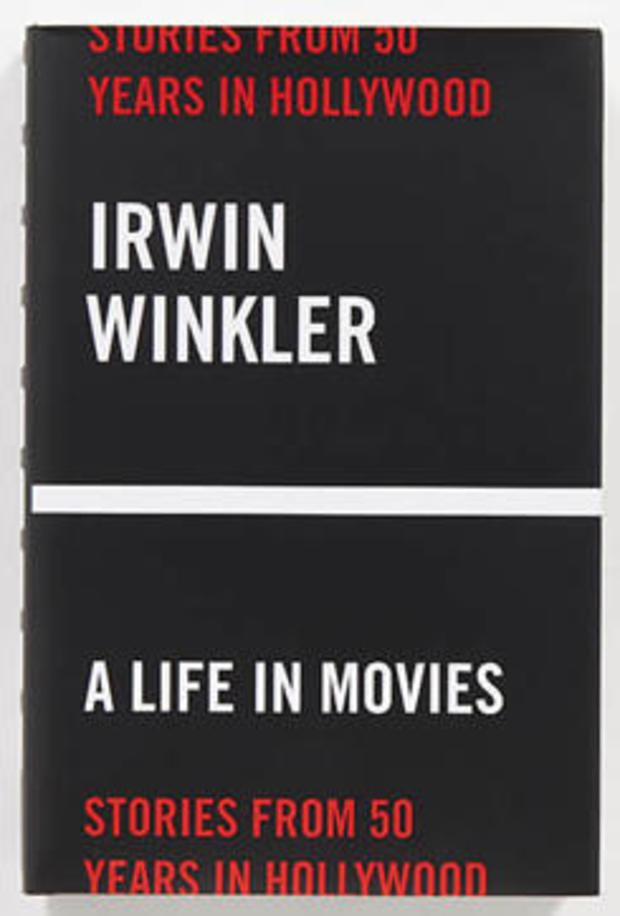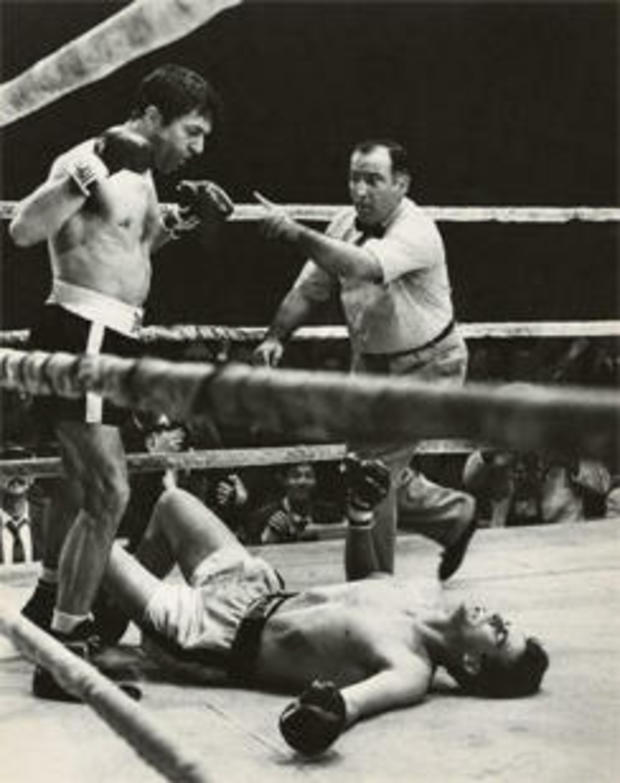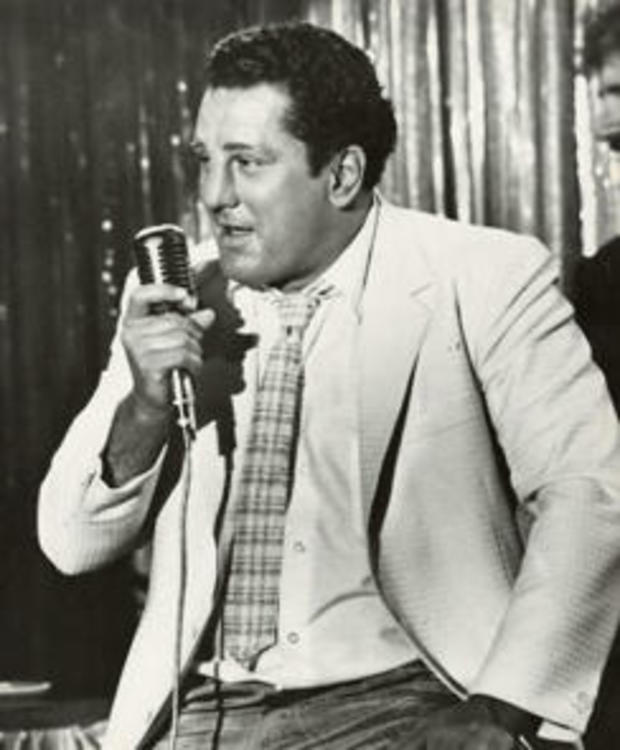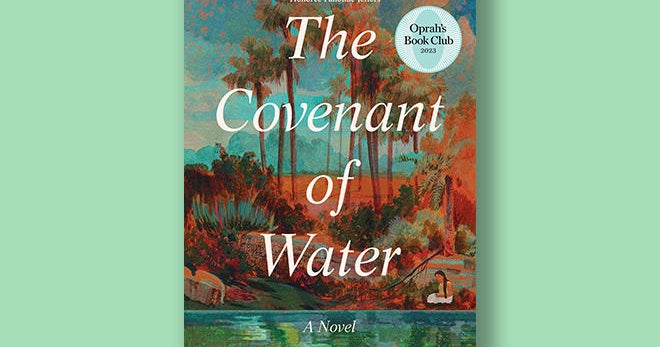Book excerpt: Irwin Winkler's "A Life in Movies"
Oscar-winning producer-director Irwin Winkler is responsible for some of the most acclaimed films in Hollywood history, from "Rocky," "They Shoot Horses, Don't They?," "New York, New York," "The Right Stuff" and "'Round Midnight," to the Martin Scorsese masterpiece "Goodfellas." His latest film is "The Irishman" (on which he reunites with Scorsese), starring Robert De Niro, Joe Pesci, and Al Pacino.
In his memoir, "A Life in Movies: Stories From 50 Years in Hollywood" (Abrams), Winkler recounts some of the many highlights of his prodigious career, including the efforts by De Niro, Scorsese and himself to get "Raging Bull" before the cameras despite reluctant studio executives. Read the excerpt below, and don't miss Ben Mankiewicz's interview with Irwin Winkler on "CBS Sunday Morning" September 15.
"Raging Bull" (1980)
While we were shooting "New York, New York" in 1976, Bob De Niro asked Bob Chartoff and me to read "Raging Bull: My Story" by Jake La Motta. The book was a memoir of the former boxing champion of the 1940s who had made his reputation as a fearless fighter who could take (and seemed to enjoy) punishment from his opponent as few boxers do.
De Niro was fascinated with the book, always carrying a copy around, and when there was an occasional break in the shooting of "New York, New York," he would be reading some part of Jake La Motta's story.
I read the book and saw not only a fight film (we had just done "Rocky") but a look into the soul of La Motta and what the violence in the ring had brought to his life outside the ring.
I told De Niro that Bob Chartoff and I would be interested in producing "Raging Bull." He then told us that there was a problem: the rights belonged to the Italian producer Dino De Laurentiis ("8½," "Serpico," "Barbarella"). I thought, well, that's that. Why would De Laurentiis give it up? Somehow De Niro persuaded de Laurentiis to turn the rights over to Chartoff-Winkler, and we agreed to develop a screenplay.
On the "New York, New York" set Bob De Niro pointed to Scorsese and said he wanted Marty to direct "Raging Bull," and there was no one else, period. I was surprised, because Marty had told me he'd never liked boxing, and although he liked "Rocky," it just wasn't his passion. His passion was the book he was carrying around, "The Last Temptation of Christ" by Nikos Kazantzakis, and he asked if Bob Chartoff and I would produce that film. "The Last Temptation of Christ" was about as far away from "Raging Bull" as one could imagine, as La Motta was a man who had very human obsessions: jealousy, rage, and violence. "The Last Temptation of Christ" was about a humanized Christ figure and the temptations all people, even Christ, have. Bob and I had worked with many talented people in the past, but Scorsese and De Niro represented a whole new way of approaching filmmaking with a passion that was infectious. We went to work on both projects.
Screenwriter Mardik Martin, who had gone to New York University with Scorsese and had worked on "Mean Streets" and "New York, New York," went to work on a draft of "Raging Bull." Martin was pretty much on his own, as Scorsese, after the long editing period on "New York, New York," directed "The Last Waltz," his documentary of the last performance of The Band, and directed the musical play "The Act" starring Liza Minnelli; he was not yet up to working on "Raging Bull" full time.
De Niro, Bob Chartoff, and I were disappointed in Martin's "Raging Bull" draft. It was a pretty standard biographic film script: La Motta as a youth (getting into trouble), starting to fight (losing, winning, losing, winning), meeting women (marriage, divorce, marriage), and not much of the passion the character needed and De Niro insisted on.
In September 1978, Marty Scorsese had collapsed on a trip to the Telluride Film Festival and was hospitalized in New York and very ill. De Niro, who was visiting with me in Los Angeles, flew to New York and spent time in the hospital, where the doctors told him Scorsese was in danger of a brain hemorrhage. As Marty recovered, Bob held his hand and talked to him about the most important thing in Marty's life, directing movies. Marty slowly recovered, and his passion for "Raging Bull" took over and soon matched De Niro's.
Paul Schrader, who had written the great script of "Taxi Driver," agreed to write a new draft of "Raging Bull," which he completed expeditiously. It was very filmable, it went back and forth in time, but it was ultimately "cold." We thought the best way to proceed was to have Marty and Bob go off and do a draft themselves based on Schrader's work and La Motta's book. They went to the La Samanna Hotel in St. Martin, worked for four weeks, and came back with an exciting new draft. Where Schrader's draft was cold, Marty and Bob's draft was passionate, dramatic, and unconventional.
Now that we had a script that all of us liked (an understatement), we set about getting United Artists on board to finance the film. The studio had gone through a management change, and the executives we had dealt with making "New York, New York" and "Rocky" were gone. A new group had taken over, and those execs were preoccupied dealing with a crisis on the big-budget troubled film "Heaven's Gate." Two new executives, David Field and Steven Bach, were hired to run United Artists, and their first call was to tell me and Bob Chartoff that they definitely would not finance "Raging Bull." I didn't tell Marty or Bob, and I arranged a meeting at Marty's apartment for Field and Bach to meet with De Niro, Scorsese, and me. I met the UA executives in the lobby of Marty's apartment building, and Bach said he didn't know why we were meeting, as they had told me quite clearly that they had absolutely no intention of making the picture. I told Bach and Field that I wouldn't accept that position and that they should hear Bob and Marty's take on the film. As the meeting started, Field said he not only hated the script, but he also hated Jake La Motta, saying, "He's no better than a cockroach." De Niro was furious, and I asked Field and Bach to leave. I then told Bob and Marty not to worry, we would be making "Raging Bull," and it would be with United Artists.
Bob Chartoff and I went to work on "Andy" Albeck, the new CEO of UA (and Bach and Field's boss) who had a background as UA's international finance executive with close ties to Transamerica, the insurance company that owned UA. We made it clear to Albeck that there would be no "Rocky II" if there was no "Raging Bull." We were serious; it was not a bluff.
We got the green light for "Raging Bull," and UA got "Rocky II" as well as "Rocky III," "Rocky IV," "Rocky V," "Rocky Balboa," and, years later, "Creed" and "Creed II."
Bob De Niro started preparing, and just as he'd had to be an expert with the saxophone to play Jimmy Doyle in "New York, New York," he had to learn to be a great fighter to play Jake La Motta. Jake trained De Niro for months, to the point where Bob was so good that Jake had him fight a couple of professional fighters (Bob was so muscular and so trim, the fighters never recognized him as the movie star). He lost two of the bouts but gave a pretty damn good showing as a prizefighter.
Marty saw Joe Pesci in an independent film, "The Debt Collector," and he was sure he was a natural for Jake's brother, Joey. Pesci then mentioned that he knew a maître d' at a local Italian restaurant, Cathy Moriarity, who, although she had never acted, would be a good Vickie La Motta (Jake's second wife). We tested Cathy and never looked at the film. Bob De Niro, Marty, and I knew while we were shooting the test that she'd be perfect, and she was. Her lack of experience was handled patiently in Marty and Bob's hands, and she gave a realistic, tender, dramatic, and sexy performance. Joe Pesci, who apparently had some very distant relationship with mob guys, was inventive, tough, and very believable.
UA, because they were concerned with the problems they were having on "Heaven's Gate," stayed far away from "Raging Bull," giving us an opportunity to make it in black-and-white and cast it exactly how we wanted. It was one of those rare instances that a studio was hands-off from all creative and financial decisions once they approved our budget.
The shooting of the early scenes took place in Marty and De Niro's old neighborhood on the Lower East Side of New York. Although it was twenty-five or thirty years after La Motta had lived there, it maintained its authenticity; the neighborhood swimming pool where kids met, the small apartments, the shops, the restaurants, and the streets all were familiar to Marty. The meeting/dance hall where Jake meets the neighborhood priest and goes off with Vickie was the same one Bob had hung around in as a teenager. The storefront Mafia hangout was still where it was when Marty was growing up. Bob De Niro and Marty were in constant communication. They were closer in spirit and action than any director and actor I had ever seen; they would finish each other's sentences or nod or look at each other sometimes without a word and understand what the other person was thinking.
The early scenes with Jake and Vickie meeting, dating, and falling in love were calm, quiet, and subdued, except for a passionate scene before a fight when Jake poured ice water on himself to cool his "ardor" (that was a new one for me). The later scenes between the two of them, with Jake's irrational jealousy, brought a whole different dimension to the film. Some of it was in the script, and Marty and Bob enhanced that part of La Motta's character so that he was just as violent toward the people he loved as the opponents he fought in the ring.
Although I had been at rehearsal, I was shocked when Marty started shooting the scene where Jake confronts Vickie in a jealous rage, slaps her around, and, as she walks down the street, accuses her of f**king his brother. She runs from him, he continues to beat her, and she taunts him with, "I f**ked all of them. What do you want me to say? I f**ked all of them: Tommy, Salvy, your brother, all of them. Yeah, I sucked your brother's c**k. I sucked his c**k and everybody else's on the f**king street. You're nothing but a fat pig, selfish fool!"
Jake then goes to his brother's house and beats him viciously in front of his brother's wife and children. No film out of a major Hollywood studio allowed for the language that was exchanged in these scenes. No one at UA saw our dailies, so no one complained, and once again the filmmakers enjoyed a tremendous amount of freedom. Was our good luck based on United Artists' preoccupation with "Heaven's Gate," or did they simply trust Bob Chartoff and me because of the success of "Rocky"? I don't know to this day.
Jake La Motta was around for the Los Angeles shoot. He was very helpful and had a surprisingly good recollection of each fight. Marty was determined not to repeat himself, and each fight had to have its own individual story. Marty also found new ways to shoot the punches and the fighters receiving the punches. That caused the shooting to be slower than the norm while makeup, "blood," and props were reapplied. The effect was stunning and was made even more authentic by the black-and-white film.
After we finished the fight sequences, we shut down the production for ten weeks to allow Bob to gain the forty pounds he needed to play the older La Motta. Bob and I had discussed the possibility of him wearing a "fat suit" and prostheses rather than risk the health problems of adding and then losing the weight in such a short period of time. Bob felt strongly that the additional weight would affect all aspects of his character: body movement, breathing, and even his voice. In the long run the weight gain contributed to the great performance.
While the production was in hiatus, our editor, Thelma Schoonmaker, put together a couple of sequences, and we were knocked out by the rhythm of the quiet dialogue scenes followed by an explosive, passionate scene. We knew we were on to something very, very different.
We were now prepared for Bob's return from his "eating" trip in Europe. His diet was mostly very rich foods, and he stayed away from physical activity. It worked so well that one day the door to my office opened, and a big, heavy man walked in and gave me a smile (more like a laugh), and it took me a couple of beats before I recognized a man I had known for ten years! It was the heavier, older Jake La Motta. It was Bob De Niro.
As we prepared the Miami sequences, the construction department came to me and needed specific instructions on how to build the jail cell Jake is thrown into after he's arrested for soliciting minors for sex. They knew from the script that he punches the wall, but having been around the set and seen the intensity of Bob's performance, they wanted to be careful not to make the wall he punched too hard (or too soft). After rehearsals, I told them that in order for Bob to perform (act), it had to be as real as possible. They didn't soften it very much, and when Bob screams, "I'm not an animal!" and pounds the wall, I really thought he'd break his hands. The "I'm not an animal" line came from Bob, and it has echoes of the first scene in the picture where an offscreen voice shouts, "What are you, an animal?" In Schrader's script he had Jake masturbate in his cell, but Bob and Marty nixed that and brought Jake's rage out by pounding on the cell wall. We finished the shoot in Los Angeles with a very different Jake La Motta. Now that he wasn't fighting, the violence in La Motta's character was contained.
On the return to New York to complete the filming, we shot in the very same nightclub where Jake was the MC/bouncer years before. In a beautifully awkward scene Jake finally embraces Joey, whom he had been estranged from since Jake attacked him in front of his family.
A few months later I flew to New York to see Marty's first cut (Bob Chartoff was preparing another film in Europe). It was long (aren't all first cuts?), but the force of the film was evident even at this early editing stage. A couple of weeks later Marty had me return to New York. He had made changes in the structure and cut about ten to fifteen minutes, and the film really flowed. Marty wasn't sure about the use of "Cavalleria Rusticana" opera music that one of the assistants had cut into the opening credits by mistake. He felt it might be too romantic. But finally Marty kept it in and enhanced it with the slow-motion shot of Jake La Motta warming up in a boxing ring. The combination of the beautiful melody and the grace of De Niro's warmup was a stunning opening sequence for the movie.
Our sound editor, Frank Warner, had done an exceptionally good job for us on "Rocky," but he didn't want to use anything from that film. He set about to make new punches, and every conceivable sound ended up in the boxing ring. Just like after "Rocky," Warner was so committed to originality that he destroyed most of the original ring effects after we finished our sound mixing so they could not be used again.
The complicated sound mix with the original grunts, punches, dialogue, and music went on for months, sometimes seven days a week. As we neared our release date, we had to deliver the film to the laboratory on a Sunday night the week before our opening. By then, the crew and all of us were exhausted, and I was starting to question my hearing. I told Marty that we had to wrap that midnight and the lab was staying open for us to deliver our tracks. We were to open in New York that Friday. We had one scene left to mix. It was in the Copacabana nightclub, and the coauthor of La Motta's book, Peter Savage, playing an anonymous customer, asks for a drink, a Cutty Sark. After raising the volume on the sounds of the glass, gulps from other customers, and music in the background, Marty said that he couldn't hear the words "Cutty Sark." I replied that all of us were stone deaf at this point and probably would never be able to hear it clearly. We were going to wrap and turn everything over to the lab. Marty said, "In that case, 'Raging Bull' is no longer a Marty Scorsese picture, and I want my name off." I said, "Fine," and it went to the lab for printing. That's Marty's commitment to his work and every detail. When Marty presented me with an award at the Chicago Film Festival several years later, they played excerpts from many of my films and included the Copacabana scene. Marty smiled and said now he could hear "Cutty Sark."
When we showed the film to Andy Albeck and the rest of the UA staff, there was not a sound in the screening room when the film ended and the lights came up. Albeck walked to Marty, shook his hand, said, "Young man, you are an artist," and left.
We opened in New York on November 13, 1980, at The Sutton on Fifty-Seventh Street. Marty and I stood in the back of the theater and were dismayed by the bad sound. I complained to the manager, who angrily informed me that he had bought six new speakers at $49 each at Radio Shack just for "Raging Bull." We, of course, had spent about a million dollars to get the sound right.
"Raging Bull" received mixed reviews initially but got eight Academy Award nominations. Bob won for Best Actor and Thelma for Best Editing. The Best Picture Oscar went to the very "Ordinary People."
"Raging Bull" is considered one of the finest movies, if not the finest, in modern filmmaking. The film has been deemed "culturally, historically, and aesthetically significant" by the United States Library of Congress and was selected for preservation in the National Film Registry in 1990. It has been recognized by the American Film Institute as one of the 100 Greatest Movies of All Time. Time magazine named it as one of the All-Time 100 Movies. Variety named it as one of their 50 Greatest Movies. The National Society of Film Critics named it one of 100 Essential Films, and the Motion Picture Editors Guild listed it as the best edited film of all time. The critic Roger Ebert named "Raging Bull" one of the 10 Best Films of All Time.
Even though the executives at UA had looked at De Niro, Marty, and me and said no one would want to see a movie about a cockroach, what they never understood was that De Niro and Scorsese were capable of making Jake La Motta, in spite of his flaws, a man you understood and sympathized with, a man with a soul.
Excerpt from "A Life in Movies: Stories From 50 Years in Hollywood" by Irwin Winkler, published by Abrams Press. © 2019 Irwin Winkler. Reprinted by permission.
From more info:
- "A Life in Movies: Stories From 50 Years in Hollywood" by Irwin Winkler (Abrams), in Hardcover and eBook formats, available via Amazon







